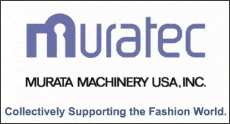
Posted January 9, 2018
DURHAM, N.C. – Many of the biggest names in the sector gathered here recently for the Digital Textile Printing Conference Version 2.0, co-sponsored by AATCC and SGIA.
Indeed, digital printing is a trending topic and technology in the textile realm and beyond, and attendees heard a wide range of speakers focusing on the latest industry trends, print technology developments, key market drivers and insights, applications and case studies.
Digital textile printing is growing at an exponential pace, and is expected to explode from a $14.2 billion industry in 2016 to a $33.4 billion industry by 2021, according to Ron Gilboa, director at Keypoint Intelligence. Garments represent the lion’s share of value in this arena due to a number of reasons, he said in his presentation, “State of the Digital Textile Printing Industry: Technology and the Innovation that Drives Growth.”
Drivers, he said, include fast fashion; competition among retailers seeking the correct mix of in-store and online offerings; direct-to-consumer online selling that is changing the fundamentals of the supply chain; Industry 4.0, with a potential impact to improve automation (i.e. 3D design, digital print, labor, cut and sew); and sustainability. And reshoring to the Americas is real and is driving local competitive alternatives to imports, he added.
Additionally, a decline in manufacturing in China offers more opportunities, Gilboa said, noting that supply chain demands are requiring small-batch manufacturing, faster turnaround, batch consistency, increased automation and more local manufacturing. Plus, customer expectations are changing, with creativity, variety, customization and the “here and now” becoming more relevant.
The environmental impact of textile and apparel manufacturing is an ongoing challenge, so printing offers an alternative in some areas, he continued. The textile industry is one of the top three water-consuming industries, and about 15 percent of fabric intended for clothing ends up on the cutting-room floor, he added.
Digital printing offers a number of advantages, he also noted. From a creativity standpoint, it provides large repeat size, print flexibility and a variety of design choices, he said. For the supply chain, it offers short-run printing and reduced production space requirements, in addition to requiring less inventory. Plus, sampling and production is done on the same printer, he pointed out. From an environmental perspective, it requires lower water and power consumption, less chemical waste and low capital investment, he said.
Gilboa also discussed technology in design and planning, including such topics as high-speed production advances, improved color consistency, ink developments and the adoption of Industry 4.0 methodologies.
Meanwhile, Vince Cahill of VCE Solutions discussed “Digital Textile Solutions – Matching the Technology for the Application.” Cahill, the former CEO of Datametrics, covered a number of aspects of digital textile printing, including key components, technologies, applications and trends. Like Gilboa, he also offered a plethora of reasons digital textile printing is one way to go in today’s consumer-driven environment.
“Digital 2D and 3D printing technologies and textile fabrication methods are changing how textile products are designed, printed and made,” Cahill said. “The number and kind of textile print applications are growing also, and the speed to market of digital print and Internet sales are driving textile printers to adopt.”
The next hurdles are automated sewing, eliminating dye finishing water waste and accurate color delivery, he concluded.
In his presentation, “Digital Textile Printing: An Impartial Guide to Choosing the More Suitable Technology for Your Business,” Duncan Ross of AVA CAD CAM Group, called digital printing a “minefield,” adding, “Everyone is the same – everyone will make decisions and everyone will make mistakes. The big guys will make the same mistakes as the small guys.”
He proceeded to explain key considerations for finding the right technology for your applications.
A panel discussion on “Fabric for Digital Textile Printing” rounded out the first session. Panelists included Kerry King of Spoonflower, Inc., Katelyn Lee of Cotton Incorporated, Mike Sanders of Top Value Fabrics and Hitoshi Ujiie of Thomas Jefferson University (formerly Philadelphia University).
Why digital printing?
Paolo Torricella, textile segment specialist at Italy-based EFI Reggiani, covered, “How Textile Production is Shaping the Fashion and Textile Industries.” He also asked the proverbial question of the day, “why digital printing?” He summarized his answer by noting that operations and ecological efficiency – space, manpower, water, energy and pollution – are reduced.
Apparel consumers, he said, are demanding fast fashion, more choices and sustainable materials and practices. And manufacturers and suppliers are diligently working to meet these needs, he added.
“The digital transformation is in progress,” Torricella said. “Everyone now wants three things: Better, faster, cheaper. In the past, you needed only two out of three of those to be competitive. Now, we need all three to be in the game.”
With retailers closing brick-and-mortar stores just about every day, the industry is ripe for change, he noted. Among issues are proper fit, inventory, returns, markdowns and the supply chain, he said.
“The current long run offshore model is failing,” he said. “The pressure to shorten time to market is immense, and the workflow is old world, outdated and unsustainable. Digital printing is the game changer. Innovative and customized, one-off, on-demand manufacturing is no longer a dream. Consumers want choices, and machines, systems and factories are becoming more programmable and automated.”
Charles Contompasis, founder of Keryakos Inc./MA+CH Studio, Schenectady, N.Y., presented an inspiring look into designing for digital. An experienced textile artist, designer, dyer and printer, he showed a number of designs he has developed over the years and explained how traditional printing and dyeing techniques have converged with digital. He called inkjet “paint brushes.”
“We’re still using inkjet,” he said. “I see inkjet as a terrifically powerful, space-age paint tool. We all know what it’s capable of. Here we have this machine that is laying down a layer of color in whatever method we choose.”
David Clark of Huntsman offered a highly detailed look at “Digitally Printed Fabric Requirements for the Automotive and Outdoor Furnishings Markets.” He pointed out that durability, colorfastness, meeting brand specifications and application know-how are essential to drive market growth in these segments. He also noted that machines are already developed to print fabrics for these end-use applications, and that process control and knowing your substrate are keys to meeting very high durability specifications.
“Brands and retailers will play an important role in the market conversion, specifying digital print and building new business models,” Clark said.
Scott Donovan, managing director, BleuPrint Creative, went over, “Grow Profit and Efficiency by Adopting Optimized Digital Textile Workflows.” He covered conventional vs. digital production, software requirements, types of workflows and what customers expect.
Workflow “nirvana” can be achieved, he said, if you: Generate file specifications for your workflow; share your color space with your customers; and communicate.
Dr. Traci A.M. Lamar and graduate student Claire Hider, both of N.C. State’s College of Textiles, discussed research they are conducting on digital inkjet printing on Jacquard woven fabrics.
Technical presentations
A series of technical presentations followed on Day 2. Roland Zimmer of Zimmer America and Thomas Kloebl of Zimmer Austria co-presented “Digital Printing Using Vat Dyes.” Zimmer, whose great-grandfather founded the company in 1874 in Austria, noted that his Uncle Peter invented rotary screen-printing in the 1960s and started with digital printing for carpet in the 1970s. Since then, Zimmer Austria has developed a number of special applications and machinery for the industry.
Zimmer produces the COLARIS family of high-performance, high-quality printing machines for all kinds of textile and carpet materials.
They explained the vat ink printing process on cellulosic fibers and discussed a project the company started about three years ago with DyStar for inks that offers a better alternative to reactive or pigment dyes, they said.
They pointed out that there are two major groups of vat dyes – indigoid, which is mainly used in denim but causes problem in digital printing; and anthraquinone, used primarily in fashion. The general fastness properties of the anthraquinone dyes are much better compared to types, they said.
Kloebl also discussed typical and possible applications for Zimmer Austria’s COLARIS.Digital Vat Printing machines.
“Our first customer on the Vat system is based in the U.K. and the machine is installed in Thailand,” he said. “They are printing home textiles, about 50 percent of which is exported to the U.S. They are very pleased.”
They went on to talk about inks, print heads and inkjet printing processes and systems.
Later, in two parts, Jonathan Read of Media One Digital Imaging Solutions, LLC, presented a deep dive into the understanding of the color characterization process for textile printing as well as color verification and controlling process variation.
Brad Riley of The Lubrizol Corporation covered the topic, “Delivering Consistent Durability in Digitally Printed Textiles.”
Also, Hamid Shirazi, Ph.D., product manager, Fujifilm Imaging Colorants, explained, “The History and Current State of Digital Pigment Technology.”
Following was a panel discussion on pigment inkjet printing featuring Shirazi; Read; Mario Vincenzi, Durst Image Technology U.S., LLC; Wolfram Reddig, EFI Reggiani; Riley; Sanders; and Dalton Cheng, Advanced Inks.
Meanwhile, Steve Smith of DPInnovations Inc. offered an insightful look at “Manufacturing 4.0, IoT & On-Demand Digital Textile Printing.”
Rounding out the conference was Mike Scrutton of Adobe Systems, who presented insights into textile printing workflows.
AATCC, SGIA Conference
Textile printing experts expound on all the ways to get digi with it

 |
|---|
 |
 |
 |
 |
 |
 |
 |
 |
 |
 |
 |
 |
 |
 |
 |
 |
 |
 |
 |
 |
 |
 |













